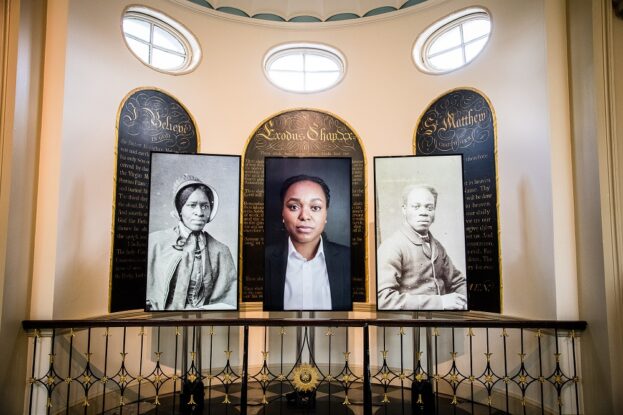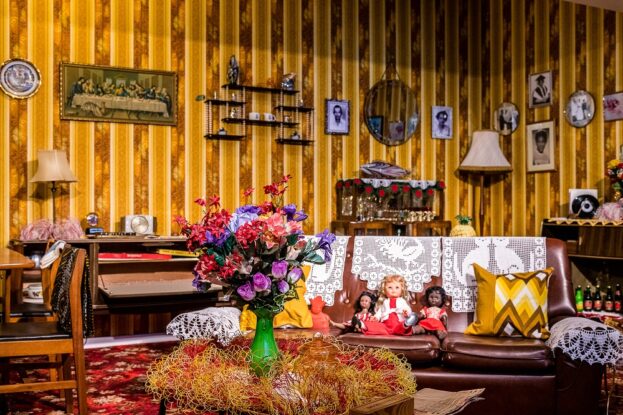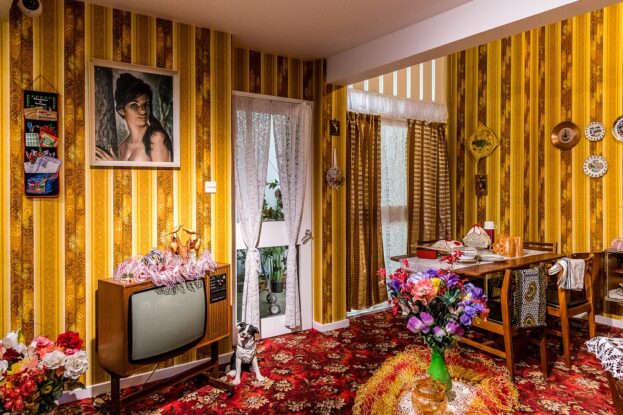
For the Museum of the Home, Windrush Day is less a celebration, and more of commemoration, that takes place on and after Tuesday 22nd June 2021, the same day of the week that Empire Windrush arrived at Tilbury Cruise Terminal in 1948.
The settling into Britain by the West Indians of the Windrush generation was featured by the Museum in its West Indian Front Room installation.

We invited Danielle Patten, Museum of the Home Research Curator and Michael McMillan the curator of the original and updated iconic heritage installation The West Indian Front Room to tell us more about their new exhibition. First, we looked back at The West Indian Front Room exhibition which ran in 2005/06 and was a very successful installation. It’s success may have been down to the fact it resonated emotionally with visitors, particularly black and brown people for it was the first time many were able to see themselves within a museum display and to have their place in British social history recognised. Their response to the exhibition was overwhelmingly positive prompting many to share their experiences of the West Indian front room or personal stories of migration. However, the display became more than a representation of a Black British home as it helped other migrant diasporas and those with working class experiences to connect with the exhibition and with each other.

This Windrush Day, the 22nd June, the museum’s programme for the new season kicks off with a digital event exploring the history of the Windrush generation, their domestic experience living in the UK, and their legacies.
The programme includes a series of short films screened via the Museum of the Home’s website: https://www.museumofthehome.org.uk/ and includes Mia Morris, Zerritha Brown and Michael McMillan sitting in The Front Room in conversation about their lived experience of the room.
There is also craft historian and researcher, Dr Rose Sinclair discussing the practices and material culture of soft furnishings in The Front Room including dolls, textiles, and making and starching of crochet doilies.
In the Almshouse Chapel, Michael McMillan discusses with Esther Niles the making of Waiting for Myself to Appear that she performed in during October 2019, now a film installation in this historic space in the Geffrye Almshouse, which was built and named after Sir Robert Geffrye, whose wealth came from sugar, spice and slaves.
There will also be a screening of the Diaspora Kitchen online session via YouTube with Michael McMillan cooking live in his kitchen one of his favourite dishes. This is Jamaican national dish, Ackee and Saltfish and ‘Hard Food’ (ground provisions), through his parents from St Vincent & the Grenadines.
Finally, the interior designer Kemi Lawson, whose Instagram post Cottage Noir has gathered popularity: https://www.instagram.com/cottagenoir/ will share a filmed commentary on her curated home, which includes wallpapers, textiles and artwork made by Black designers and craftspeople, as well as archive material about her ancestors.
The new exhibition will present and bring this important part of Britain’s multicultural history to life. It’s designed to show how African Caribbean migrant families set up home in the UK, and to explore the people, activities, sounds, and material culture that filled the home space.

The museum drawing on its Documenting Homes collection is sharing memories, experiences, photographs, and objects with visitors and accurately recreating the West Indian front room. The local community have been involved in helping to put this new exhibition together, particularly those who set up home in the 1970s. The partnership with the local community will continue as they help the museum find new ways to represent Windrush stories of home in the museum and their contribution to homes and homemaking in Hackney.
Subsequent events that will take place in The Front Room will feature cultural activists and arts practitioners, scholars and researchers exploring the material culture, interior design, crafts practices, music and television, spiritual and religious identities, and the cultural-political events taking place in the UK and across the African diaspora that took place during the 1970s.
So, in recreating a 1970s migrant front room as a permanent display in the redeveloped Rooms Through Time gallery of the Museum of the Home with the artist/curator and writer Michael McMillan, who produced the original West Indian Front Room, the museum is hoping for another evocative and emotional visitor experience.
For details, visit https://www.museumofthehome.org.uk/explore/museum-in-action/windrush-day-2021/.
